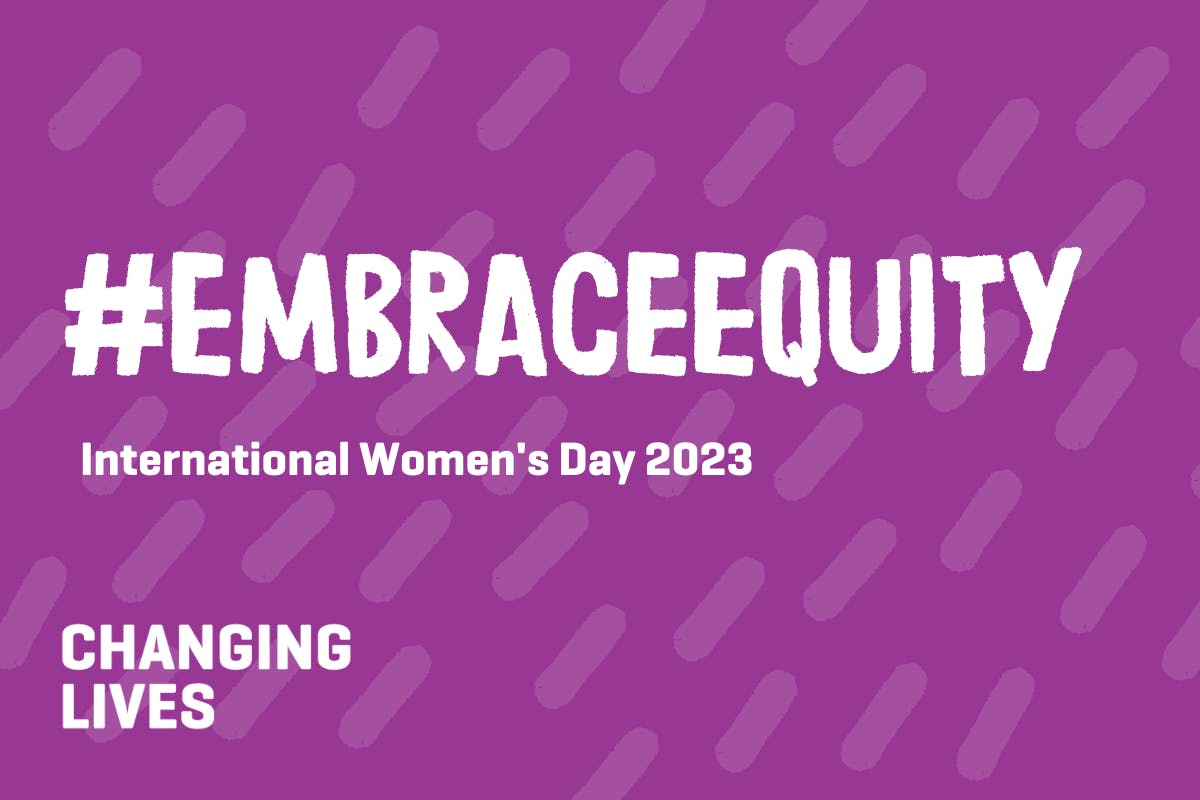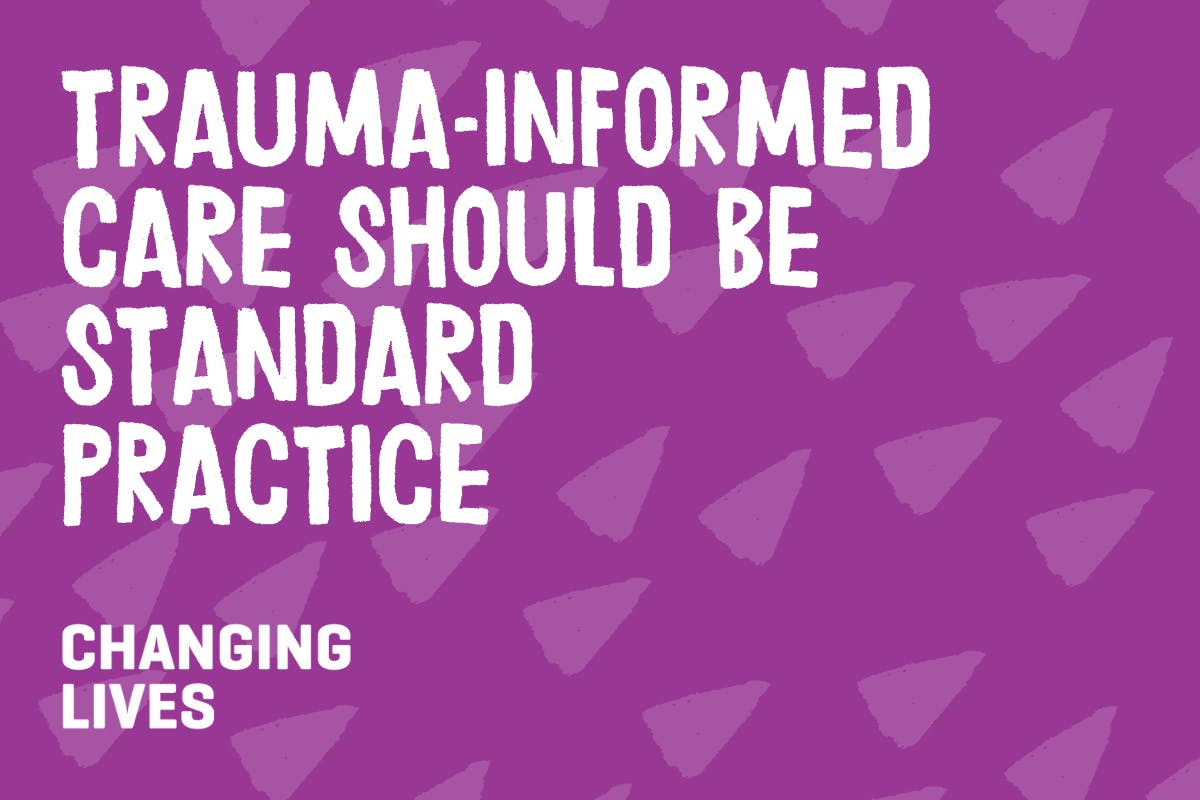In this guest blog post, PhD student Faye Green talks about her research project in collaboration with the Women’s Wellness Centre in York.
When I first visited the Women’s Wellness Centre (WWC) in March 2022, they had just started to run a craft drop-in session, after previously having suspended drop-in support due to the pandemic. The serendipity of this, along with how warm and welcoming the staff at the Centre were to me in that first meeting, made it clear that this would be the perfect project to partner with. The PhD project, funded by the Northern Bridge Consortium, is based in the School of Design at Northumbria University, in partnership with Changing Lives. My research explores how craft activities, and specifically textiles making, contribute to trauma-informed work with women who experience multiple forms of disadvantage. I am particularly interested in how craft activities work within drop-in support services to enable individual, collective and organisational forms of reparative practice in relation to trauma.
Drop-ins are, in general, hugely undervalued. From an academic perspective, drop-ins and day centres are under-represented in the literature across health and social care settings. In service provision, they are also often overlooked in commissioning and therefore radically underfunded. This is perhaps because the kinds of care practices that take place in them can seem mundane, indirect, or hard to measure. Drop-ins are connected to micro-processes of change; their outcomes are incremental, difficult to articulate and easy to dismiss. As a result, drop-ins are often viewed as innocuous and labour-light: a soft-touch, not-quite-intervention that requires minimal resources and acts as an informal add-on to the ‘real’ work of structured support programmes and provision.
Craft is similarly undervalued and overlooked as a creative endeavour, somehow always made secondary to other art forms, relegated to the world of the domestic and effeminate. Although creative activities within support services are also often seen as frivolous additions, I believe they offer something vital and integral. As one Changing Lives worker put it: “I feel like some people think craft and this stuff is like “fluffy” stuff, but it isn’t… Like, for me, this is the work.” In fact, the drop-in is at the heart of the work at the WWC. Sarah, a project worker at the Centre, described how the drop-in runs alongside and threads through women’s engagement with other support, both within the centre and externally, at every stage of their journey. Drop-ins play a part at every phase of the Changing Lives Theory of Change, supporting diverse forms of being, becoming and belonging, and often providing connection in the transitions. This type of support provision is flexible, responsive, and forgiving. Drop-ins are about consistency, about presence; they don’t necessarily work towards something specific, but instead hold space for different versions of progress, and different patterns of engagement, to be recognised and nurtured. The drop-in acts as an entry point into support, as a crucial first port of call for women to visit the Centre and learn about the other services available. It also offers an open invitation to return, and to keep coming back; the informal, peer-led structure of the drop-in allows women to come and go, providing consistency without expectation, and making space for forms of participation that exist outside of the demands that more structured, mainstream services make on the way women engage.
“I feel like some people think craft and this stuff is like “fluffy” stuff, but it isn’t… Like, for me, this is the work.”
Steph, the project lead, described the drop-in as a kind of ‘cauldron’. There is something, if not exactly magical, but bordering on the extraordinary about this kind of space. The strange way that things come together, or come apart. I’ve been going along to the craft drop-in at the WWC regularly since March last year. In that time, the group – changeable as it is – have taken up a whole host of creative projects. Women have learned to knit, or returned to knitting for the first time since they were children, and made brightly coloured bunting flags that will be hung in the Centre. Bunting was chosen not only because of its associations with celebration and joy, but also because it enables many hands to contribute to its creation, in an ongoing process that can be continually added on to, in-keeping with the way the drop-in itself is structured.
We also made pom-poms to decorate the Christmas tree, which was donated to the Centre. Both the bunting flags and the pom-poms enabled women to get involved and contribute to the group activity without needing to be at the drop-in week in, week out; they could be made reasonably quickly, and finished in a single session. As well as learning new skills, women are able to connect with each other in casual conversation – with making activities mediating interactions in a way that feels less intense, building a sense of safety and trust among the group. These kinds of collective creative endeavours offer possibilities for women to build relationships not only with each other and staff members, but also with the Centre itself; as the things they make adorn the walls of the building, the women themselves become part of its fabric. I feel that I have also become a part of the group, gradually gaining an identity, becoming a familiar face with a more and more particular role – the making of things.
As the weeks have passed, we have moved into a phase where women are beginning to take on more personal projects, making objects invested with explicit meaning and significance. This has opened up possibilities for different conversations and connections among the group, as women show support and encouragement to one another, and touch on the highly personal and at times painful processes behind the objects being made. Deeply moving moments, nestled among the hot chocolate, the cigarette breaks, the chatter. This has happened in part as a result of me, as a researcher, showing up each week with the presence and consistency that the drop-in relies on, sitting with my crochet hooks or setting my bright red caddy with fabric pens, needles and threads on the table.
But it could not happen without the sustained attentiveness of staff – their commitment not only to holding this kind of space for the women who need it, but also to the research collaboration. It happens through all those informal conversations that take place in wrap-around, holistic support. It happens through the way staff respond to things women say, ideas they have, supporting them to connect with me so we can pick up these threads and nurture them. It happens through checking-in: a phone call or a text in the morning, a reminder that the drop-in is on, gentle and generous encouragement. It happens through support with travel, and the sharing of food – the unshakeable power of a cheese toastie. These things are all part of the work of the drop-in, which, far from being light-touch, is sustained through the commitment of staff to provide truly trauma-informed, responsive support for the women who come to the Centre. This is also what makes this project a genuinely collaborative endeavour, and makes it possible to conduct research in the often fragile, sometimes volatile, but always present space of the drop-in.






